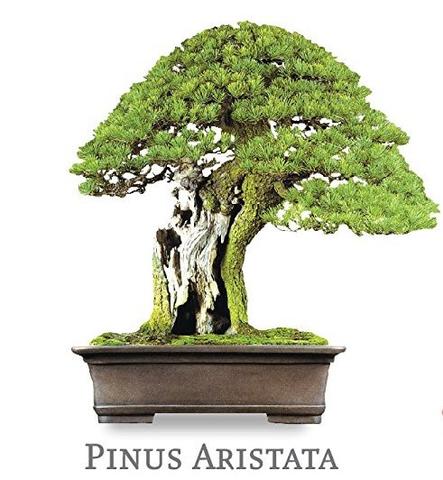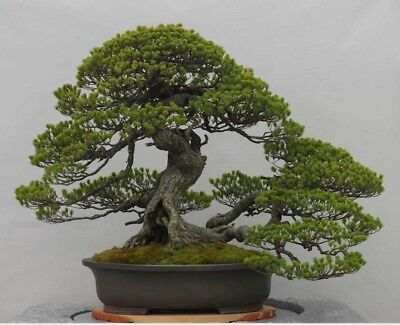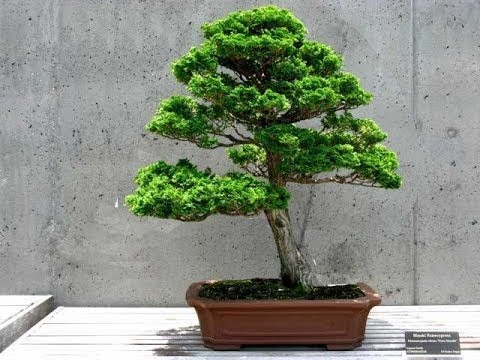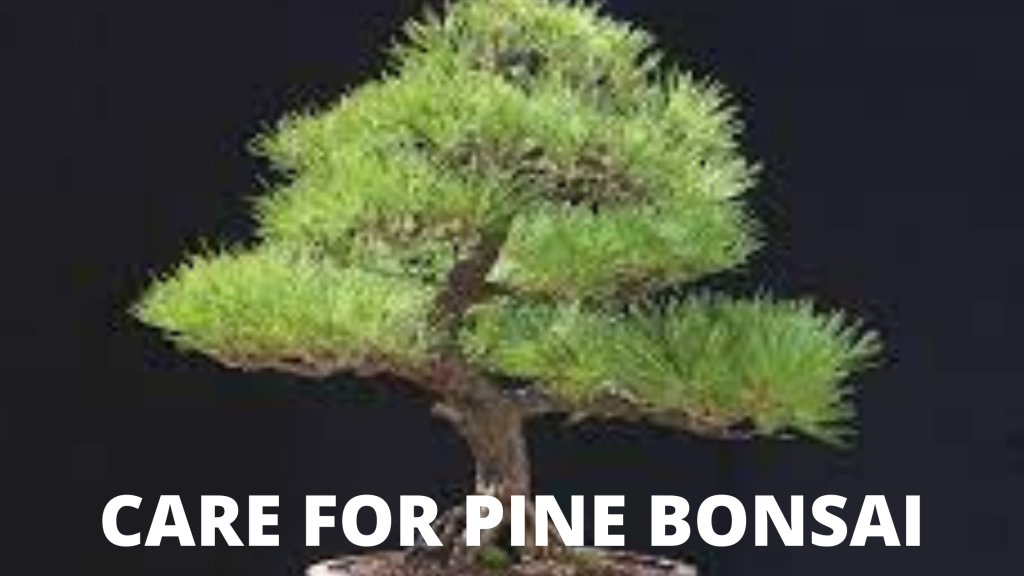Care Guide For Pine Bonsai [2021]
The care guide for pine bonsai is the most important aspect to consider when you want to grow this type of tree.
The best way to start with caring for your new pine bonsai is by taking into consideration where it will be placed in your home and what size pot it will be potted in.
It’s also vital that you water the plant properly, as they are a lot more sensitive than other plants such as ferns or palms.
Let’s discuss a few pine bonsai trees and how to care for them
Types of pine bonsai trees and pine bonsai care
In general, there are two types of pine bonsai trees;
- the more common one being the Japanese Black Pine, also known as Pinus thunbergii and
- the other is a Chinese species called Pinus armandii.
The majority of these types of bonsais contain straight needles with green or blue-green color.
A lot of people prefer to grow these types of bonsais as they are easy to care for and can live for a long period of time. In fact, some specimens found in the United States have been documented at being 600 or more years old!
Pinus aristata bonsai

One of the most popular types of pine bonsai is Pinus aristata sometimes called a Blue Daimyo. These varieties are generally around three feet tall and can live for approximately 50 years when properly cared for.
Pinus aristata bonsai tree care
When it comes to caring for your Pinus aristata, the rule of thumb is that they are hardy and can handle a wide range of temperatures.
If you live in an area with cold winter months like Boston or New York you need to have an indoor spot ready for them too so they don’t freeze!
To ensure the longest life span with your Pinus aristata bonsai tree you need to make sure it is getting at least six hours of sunlight daily and plenty of water.
Japan Black Pine bonsai

Also known as the Satin or Needle Leaf Japanese Black Pine, this type of bonsai is a lot more popular than the Chinese variants. They are great for small spaces and will reach an average height of approximately three to five feet tall.
The needles on this type of pine bonsai can range from one inch long to four inches long, and its smallest trunk is only half an inch in diameter!
Japanese Black Pine tree care
To get the longest life out of your Japanese Black Pine bonsai, you will need to make sure it is properly cared for. Make sure that any pruning you do is done during the summer months and that you keep the soil moist at all times.
This type of pine bonsai needs sunlight just like its counterpart, so make sure you place it where it can get at least six hours of sunlight each day.
Chinese Yellow Pine Tree bonsai
This type of pine bonsai tree originated from the Chinese mountains and is known for its thick branches and also its bright yellow needles. This is a quite dwarf variety of pine bonsai that only reaches heights of approximately two to three feet tall and one foot in diameter.
Chinese Yellow Pine tree care
When you choose to care for a Chinese Yellow Pine bonsai, some of the vital aspects are that it should be kept indoors most times of the year.
This will make sure that your plant stays healthy and has minimal problems with pests or diseases. Also, make sure that you choose a bonsai pot that is big enough so the soil doesn’t dry out too fast.
These types of pine bonsais are considered to be beginner and intermediate level varieties, as they are quite easy to care for.
In fact, even the most inexperienced person will be able to take care of one with little to no problem.
Chinese White Pine
This variety of pine bonsai is a lot more popular in Asian countries, especially China. The colour of this type of plant tends to be lighter and contains shorter needles than the Japanese version. It also grows very quickly when compared to other types of bonsai trees.
Chinese white pine bonsai tree growing in a container with rich dark soil and rocks.
Chinese White Pine tree care
When it comes to Bonsai White Pine care, they need the same amount of sunlight as their Japanese relatives. They also need a cooler temperature for their pots and soil, which will help ensure longevity of the tree.
Chinese white pines are considered to be intermediate level bonsai trees, so anyone who has had experience with other types of plants will have no problem taking care of these.
Leyland Cypress bonsai tree
Leyland cypress is a type of juniper that comes from Japan and is in the same genus as yews, arborvitaes, and junipers.
These varieties are often seen used for cemetery plantings, as they tend to have a very upright growth habit. They also have silvery-blue needles and grow quite quickly!
Leyland cypress bonsai care

These types of juniper trees need to be cared for like most other kinds of pine tree species; with plenty of water, sunlight, and proper soil mixture.
Make sure that your pot has enough room to grow, as these trees can reach heights of up to fifteen feet.
Leyland cypress bonsai tree in a hand carved ceramic pot with smooth dark grey finish.
Rocky mountain pine bonsai tree
Rocky mountain pine bonsai also called the Pinus Glauca and Rocky Mountain White Pine is a medium-sized tree that can reach an average height of 40 feet tall, with a trunk diameter of up to ten inches.
This type of plant has green needles and usually grows in high altitudes. It’s one of the most sought after pine bonsai varieties in the market.
Rocky Mountain Bonsai Tree Care Tips

Rocky mountain pines require full sunlight, at least for six hours each day to grow.
Temperature
The ideal temperature for this type of tree is between 50-75 degrees Fahrenheit, but it can also adapt to colder weather conditions.
Make sure that the plant is not exposed to strong winds or extreme temperatures. This is one of the natural defense mechanisms that the tree uses to protect itself against sun damage.
Watering
When watering your plant make sure you use room temperature water, and only do this as needed.
Wait until the topsoil is dry before giving it more water.
It’s also vital that you don’t over-water your plant which can cause the roots to rot.
Repotting
When repotting your plant, use a mixture of peat moss and soil at a ratio of 1:1 with river sand as an additive. Avoid using fertilizers in the first one or two years after transplanting.
You can begin fertilizing it once it has been two years since you last transplanted the plant.
Rocky mountain pine bonsai tree growing in a container with rich dark soil and rocks.
Pruning
When pruning your tree make sure you do this during the spring or summer seasons when it’s active.
If you prune it during the winter months, the branches might not be able to adjust to its natural cycle which can cause not only harm but also cause unnecessary stress for your plant.
Tie the branches and stems of the tree with fishing line or thread to make sure they have a strong support when growing. This is because its trunk is relatively small compared to other pine bonsai varieties.
Also tie them in place when repotting so it can hold back the soil.
When using wire, make sure to use copper wires because it works the best with pine bonsai treesi.
If you have to use aluminum wire; wrap it around the branches at least three times to make sure it gets a strong hold.
You can also use grafting so your plant will form a stronger structure for its new branches.
Miring or root pruning
Since this type of pine bonsai prefer colder weather, you can make use of a technique called miring or root pruning to shape its new branches.
Miring helps the plant grow stronger roots which makes it more resistant to diseases and pests.
To do this, dig a hole in the soil and then cover it with mulch or pine needles and leave it for two weeks.
Then measure its roots and if possible trim them to create more surface area that can absorb nutrients from the soil easier.
Miring also makes your plant use its stored energy quicker which means you will have to repot it more often than usual.
Make sure that you pot this bonsai only once a year and remove any dead roots or branches when doing so.
Pinus thunbergii bonsai
A Chinese variety called Pinus thunbergii that resembles the Japanese black pine.
The needles on this type of bonsai tree are usually shorter than its counterpart. It tends to grow at a lower rate, which makes it ideal for people with a lot less time to care for their bonsai.
Pinus thunbergii bonsai tree care tips
This type of pine bonsai tree is one of the easiest to care for since it only requires half a day of sunlight, and should be placed in an area that has cool weather such as at your home’s living room.
Pinus thunbergii prefer acidic soil made from soil with peat moss, which also has small rocks as an additive.
Due to its slow growth rate, this type of pine bonsai needs regular fertilizer to help promote the growth and development of its branches. If it’s been more than one year since you’ve last repotted your plant, add fertilizer.
To create a stronger trunk, prune your Pinus thunbergii bonsai’s branches during the spring season.
Then re-pot it twice a year.
As mentioned earlier, pruning this type of pine bonsai will make it grow weaker if you do it in the winter or autumn months. This is because it hasn’t adapted to its natural cycle yet.
When trimming your bonsai’s branches, make sure you remove the dead portions to avoid the spread of diseases or pests that cause infection in your plant. You can also use grafting and wiring if these techniques are necessary for your bonsai tree.
Pinus thunbergii bonsai planted in a container with rich dark soil and rocks.
Scots pine bonsai tree
The Scots pine or Pinus sylvestris another type of bonsai that resembles the Japanese black pine but its needles are larger and they grow upright as it matures.
This varieties is possibly one of the most popular types of pine bonsai trees because it’s easy to care for when compared to other types.
Scots pine bonsai tree care tips

Scots pine bonsai prefer cooler climates and partly sunny areas, but when planted indoors you will need to provide it with a high amount of light.
It also needs soil that’s rich in organic material like peat moss along with small rocks or even seashells as an additive.
Scots pine bonsai trees can be pruned at any time of the year, but you have to remove only dead or damaged portions.
It will also do well in high humidity and dry air since it’s able to withstand both kinds of weather.
Scots pine bonsai can be repotted once a year during the spring season when its actively growing, and trimming the roots during the summer months will help develop a stronger trunk.
If you want to create more branches, the best time to do so is in late spring or early summer. You can also prune your bonsai’s needles if you feel that it’s too long, and don’t forget to remove any dead parts when doing so.
Wiring your bonsai tree will help you achieve the natural look you’re going for, but don’t do this on a regular basis.
This variety of pine bonsai tree is perfect if you want to have a miniature version that resembles a full-sized tree in miniature form due to its slow growth rate.
Conclusion
Whether you are looking for a bonsai tree to add into your indoor or outdoor home decor, we have some tips that will help.
We’ve compiled an easy-to-follow care guide below with information about different species of pine and their specific needs.
If this is the first time you have cared for a bonsai tree, don’t worry!
Our extensive list should give you all the insight needed to get started on caring for your new Pinus aristata bonsai, Japanese Black Pine Tree Care, Chinese Yellow Pine Bonsai Tree Care or any other type of pines in our selection.
For more about bonsai tree care, read this article
Happy Bonsai Growing!


